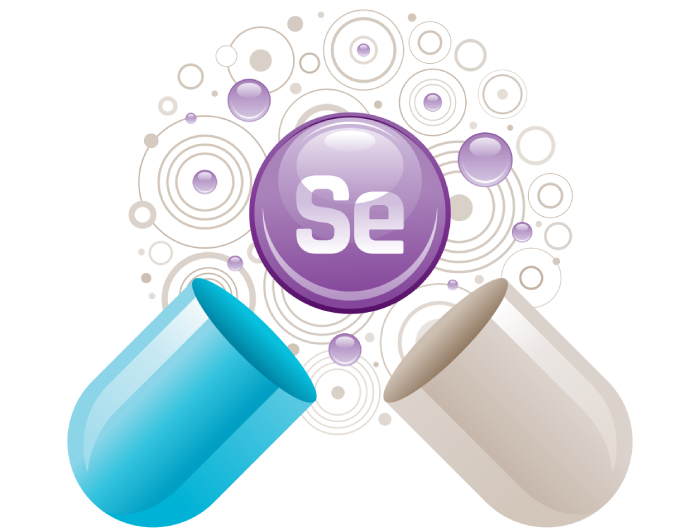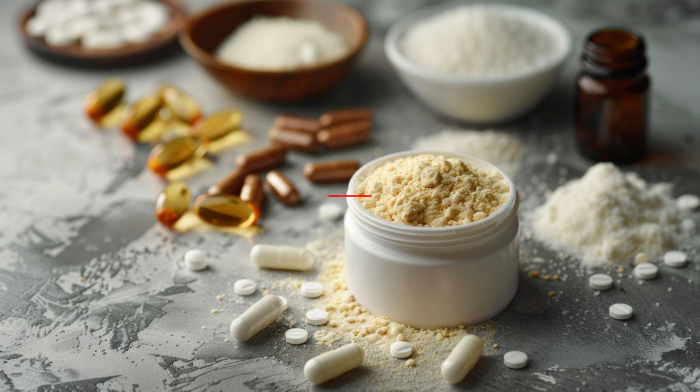Have you ever wondered what gives certain lichens their remarkable medicinal properties? The answer lies in a fascinating compound that has been quietly revolutionizing our understanding of natural bioactive substances. Today, we’re diving deep into one of nature’s most intriguing compounds – usnic acid. This natural substance has captured the attention of researchers and health enthusiasts alike, not only for its unique molecular structure but also for its potential applications in human health and wellness. The growing interest in this compound reflects a broader trend toward understanding and utilizing natural substances that have been part of traditional medicine systems for generations.

Understanding Usnic Acid: Nature’s Hidden Gem
Walking through an ancient forest and spotting pale, crusty patches on tree bark – those are likely lichens, the primary source of usnic acid. These remarkable organisms, which represent a symbiotic relationship between fungi and algae, have evolved over millions of years to produce this unique compound as part of their survival strategy. This fascinating compound, technically known as 2,6-diacetyl-7,9-dihydroxy-8,9b-dimethyl-1,3(2H,9bH)-dibenzo-furandione, has been used in traditional medicine for centuries, particularly in Northern European and Asian healing traditions. The historical use of lichen-derived medicines spans multiple cultures and continents, suggesting a universal recognition of their therapeutic potential. Modern science is now beginning to unravel the mechanisms behind these traditional applications, leading to exciting discoveries about how this compound interacts with biological systems. But how does this natural wonder actually work in our bodies, and what makes it so special among the vast array of natural compounds available to us?
The Science Behind the Structure
The usnic acid structure is particularly interesting to scientists because of its unique molecular arrangement, which contributes to its diverse biological activities. Think of it as a biological key that fits perfectly into specific locks within our cells, initiating various biochemical responses that can influence cellular function. The compound’s distinctive dibenzofuran skeleton, coupled with its specific functional groups, creates a molecule that can interact with multiple biological targets. This special structure gives usnic acid its remarkable properties and influences its usnic acid solubility, which plays a crucial role in how our bodies can utilize it. The compound’s moderate lipophilicity allows it to cross cellular membranes while maintaining some water solubility, creating an optimal balance for biological activity. Understanding these structural characteristics has been crucial for researchers working to develop more effective formulations and delivery systems for usnic acid-based supplements.
Remarkable Benefits and Applications
What makes usnic acid truly special is its versatile range of potential benefits that extend far beyond its traditional uses. Modern scientific research has begun to unveil an impressive array of biological activities that could have significant implications for human health and wellness. Through carefully controlled studies and systematic investigations, researchers have discovered that this compound interacts with multiple cellular pathways, potentially offering a multi-faceted approach to supporting health. Let’s explore some of the most promising usnic acid uses that researchers have discovered, backed by emerging scientific evidence and ongoing clinical investigations that continue to expand our understanding of this remarkable compound.
Metabolic Support and Weight Management
One of the most talked-about aspects is usnic acid fat loss potential, which has garnered significant attention in both scientific and consumer circles. Studies suggest it may influence cellular energy production through its effects on mitochondrial function, specifically through a process called uncoupling of oxidative phosphorylation. This mechanism is similar to how certain natural compounds can influence metabolic rate and energy expenditure. However, it’s essential to approach these claims with careful consideration of safety and proper dosing, as the relationship between cellular energy metabolism and weight management is complex and highly individualized. Research indicates that usnic acid’s effects on metabolism may be dose-dependent and influenced by various factors including individual physiology, diet, and overall health status.
Antimicrobial Properties
Research indicates that usnic acid might help combat various microorganisms, making it an interesting subject for scientific investigation in an era of increasing antimicrobial resistance. Laboratory studies have demonstrated its ability to inhibit the growth of various bacteria, fungi, and other microorganisms through multiple mechanisms. This broad-spectrum activity appears to be related to the compound’s ability to disrupt cellular membranes and interfere with essential metabolic processes in these organisms. The unique structure of usnic acid allows it to interact with microbial cell components in ways that differ from conventional antimicrobial agents, potentially offering new approaches to addressing resistance issues. This property has led to increased interest in its potential applications in both healthcare and personal care products.
Antioxidant Effects
Like a molecular shield, usnic acid appears to help protect cells from oxidative stress, though more research is needed to fully understand this mechanism. The compound’s antioxidant properties stem from its ability to neutralize free radicals and support cellular defense systems. This activity is particularly interesting because it operates through both direct and indirect mechanisms – directly scavenging harmful free radicals while also potentially upregulating the body’s natural antioxidant defense systems. Studies have shown that this dual-action approach might offer more comprehensive protection against oxidative damage compared to simple antioxidant compounds. The implications of these findings extend to various aspects of health, from cellular aging to tissue protection under stress conditions.
Understanding the Safety Profile
When discussing usnic acid benefits, it’s equally important to address potential usnic acid side effects with a comprehensive, evidence-based approach. Like any bioactive compound, it requires careful consideration of multiple factors that can influence its safety and efficacy in individual users. This understanding must be grounded in both scientific research and practical clinical experience to provide a complete picture of the compound’s risk-benefit profile. Safety considerations include not only direct effects but also potential interactions with other supplements or medications, individual sensitivity variations, and the importance of proper dosing protocols.
Proper dosing is crucial, with typical recommendations ranging from 10-30mg daily, though these amounts should be adjusted based on individual factors and specific health goals. The dosing strategy should take into account factors such as body weight, overall health status, and the presence of any underlying medical conditions. Additionally, the timing of doses and their relationship to meals can significantly impact both effectiveness and tolerability.
Individual sensitivity can vary significantly, influenced by genetic factors, overall health status, and concurrent supplement or medication use. Some people may experience optimal results at lower doses, while others might require slightly higher amounts within the safe range. This variability underscores the importance of starting with lower doses and carefully monitoring individual responses.

How to Choose the Right Supplement
Looking for a quality usnic acid supplement requires careful evaluation of multiple factors to ensure both safety and efficacy. The supplement market offers numerous products containing usnic acid, but not all are created equal. Understanding the key characteristics that distinguish high-quality supplements from inferior products can help consumers make informed decisions that align with their health goals while minimizing potential risks. This comprehensive approach to supplement selection involves examining various aspects of product quality, manufacturing processes, and formulation strategies.
Quality Assurance
Verify that the manufacturer follows GMP (Good Manufacturing Practices) and provides third-party testing results. This level of quality control ensures consistent potency and purity across different batches of the product. Look for manufacturers who maintain transparent documentation of their testing procedures and results, including certificates of analysis that verify the identity and concentration of usnic acid in their products. Additionally, consider companies that implement stability testing programs to ensure their products maintain potency throughout their stated shelf life. The best manufacturers also conduct regular testing for potential contaminants, including heavy metals, microorganisms, and other unwanted substances that could compromise product safety.
Proper Formulation
The best supplements account for usnic acid solubility issues through appropriate delivery systems. This consideration is crucial because the bioavailability of usnic acid can significantly impact its effectiveness. Advanced formulation technologies might include specialized encapsulation methods, lipid-based delivery systems, or other innovative approaches that enhance absorption and utilization by the body. Manufacturers should provide clear documentation about their formulation strategy and any specific technologies used to improve the compound’s bioavailability. The stability of these formulations under various storage conditions should also be considered when evaluating different products.
Smart Usage Guidelines
For those interested in exploring usnic acid’s potential benefits, implementing a structured approach to supplementation can help optimize results while maintaining safety. This comprehensive strategy involves careful monitoring, consistent usage patterns, and regular evaluation of outcomes. Consider these expanded guidelines for incorporating usnic acid supplements into your health routine:
Starting with lower doses to assess tolerance is essential for understanding your individual response to the supplement. Begin with the minimum effective dose and gradually increase if needed, while carefully monitoring for any adverse effects. This conservative approach allows you to identify your optimal dosage while minimizing the risk of negative reactions. Document any changes in how you feel, both positive and negative, to help establish your personal response pattern.
Maintain consistent timing with your supplementation to establish a reliable routine that maximizes the potential benefits. Consider factors such as meal timing, other supplements or medications you may be taking, and your daily schedule when planning your supplementation strategy. Some users find better results taking their supplement with meals to improve absorption, while others might prefer taking it on an empty stomach based on their individual response.
Keep detailed records of your experience, including dosage, timing, effects, and any changes in your overall health status. This documentation can be invaluable for optimizing your supplementation strategy and identifying patterns in your response to the supplement. Share these records with your healthcare provider during regular check-ups to ensure your supplementation approach aligns with your overall health goals.
Market Trends and Consumer Interest
The growing interest in natural compounds has led to increased attention on usnic acid, reflecting broader trends in the health and wellness industry. Market analysis shows a steady rise in demand for supplements containing this compound, particularly among health-conscious consumers aged 25-45. This demographic tends to be well-informed about health matters and actively seeks out natural alternatives to support their wellness goals. The market expansion is driven by several factors, including increased awareness of traditional natural remedies, growing interest in sustainable health solutions, and expanding research into natural bioactive compounds.
Current market data indicates that the usnic acid supplement segment is experiencing significant growth, with new products entering the market regularly. This growth is supported by increasing consumer awareness of the compound’s potential benefits and a broader trend toward natural health solutions. Manufacturers are responding to this demand by developing more sophisticated formulations and delivery systems, while also investing in quality control measures to ensure product safety and efficacy.
Future Perspectives and Research Directions
What does the future hold for usnic acid research? Scientists are actively exploring new frontiers in understanding and utilizing this remarkable compound. Current research initiatives span multiple disciplines, from molecular biology to pharmaceutical development, creating an exciting landscape of possibilities. Investigators are examining novel applications in health and wellness, with particular focus on developing improved delivery systems that could enhance absorption and bioavailability. Additionally, research teams are investigating potential synergistic effects with other natural compounds, which could lead to more effective therapeutic applications.
Making an Informed Decision
Before incorporating any usnic acid supplement into your routine, it’s crucial to take a thoughtful, well-researched approach. Your current health condition and medications should guide your decision-making process, as individual health profiles can significantly impact supplement effectiveness and safety. Look for products backed by scientific studies and reputable manufacturers who prioritize transparency and quality control. Most importantly, establish a relationship with healthcare providers who understand your specific health needs and can provide personalized guidance on incorporating usnic acid supplements into your wellness routine.
Final Throught
Usnic acid represents a fascinating intersection of traditional knowledge and modern science, offering promising potential benefits while requiring careful consideration of safety and individual factors. As research continues to evolve, our understanding of this compound grows deeper, revealing new possibilities for its application in health and wellness. Remember that while natural compounds can offer significant benefits, approaching their use with informed caution is crucial for optimal results.
Finally, consider that the journey to better health is deeply personal, and what works for one individual may not work for another. By staying informed about the latest research, maintaining open communication with healthcare providers, and carefully monitoring your response to supplementation, you can make the most of what usnic acid has to offer while ensuring your approach to health remains both effective and safe.
This comprehensive exploration of usnic acid showcases its remarkable potential while emphasizing the importance of responsible use. As science continues to unlock new discoveries about this fascinating compound, we stand at the threshold of exciting possibilities in natural health and wellness solutions.



